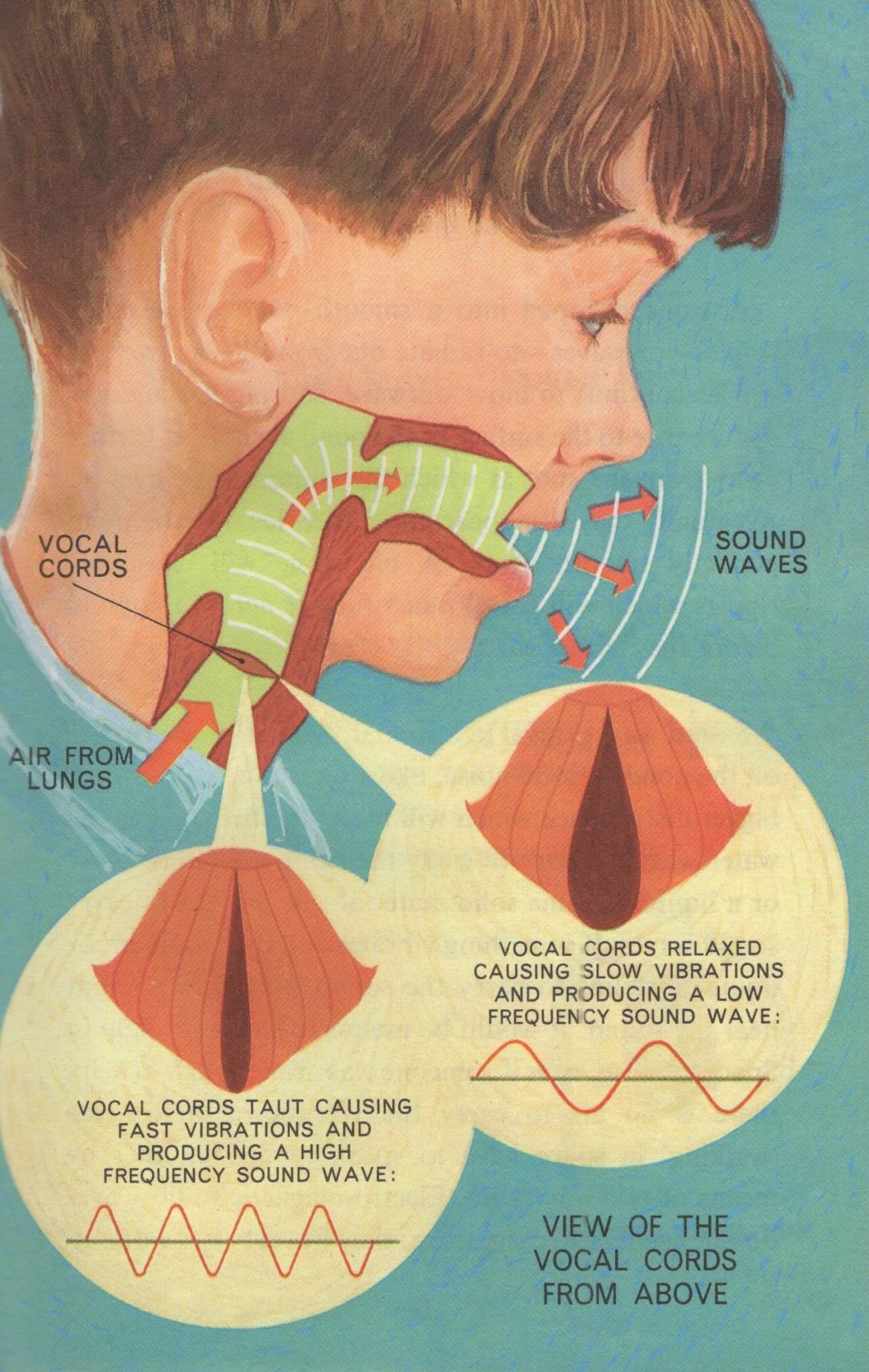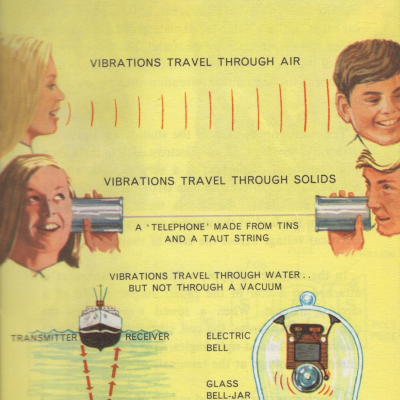
Whilst the television camera is picking up the picture, we must have some means of picking up the voices of the actors or commentators and all the other sounds connected with the scene being televised. The camera's job is to turn the sound into electricity. Before we see how the microphone does this, there are certain principles we must first know about.
All sounds are the result of vibrations which travel through the air in waves. You can feel sound vibrations by placing your hand over your open mouth and saying 'ah'. The little tingle in your hand is caused by the vibrations of the sound you are making. A loud sound is a result of a powerful vibrations which in turn cause powerful waves. A soft sound is the result of weak vibrations which, therefore, produce weak waves.
Different kinds of sounds are the result of different sorts of vibration. If something vibrates frequently, thats is - a great many times per second, it produces a high-frequency sound. We hear it as a high-pitched noise like a squeak, a whistle or a scream. On the other hand, something vibrating slowly produces a low-frequency sound. It has a low pitch which is heard as a low note like a growl, a groan or a very deep voice.
Sound waves can travel only a certain distance. A loud noise, causing powerful waves, will travel further than a soft noise, but even powerful sound waves will not travel far enough for us to hear a noise if we are a long way from the object or person making it. The normal human ear will hear vibrations from about sixteen per second to about sixteen thousand per second.
Material taken from: A Ladybird 'Achievements' Book, Publishers: Wills & Hepworth Ltd, Loughborough, First published 1968. Printed in England.

